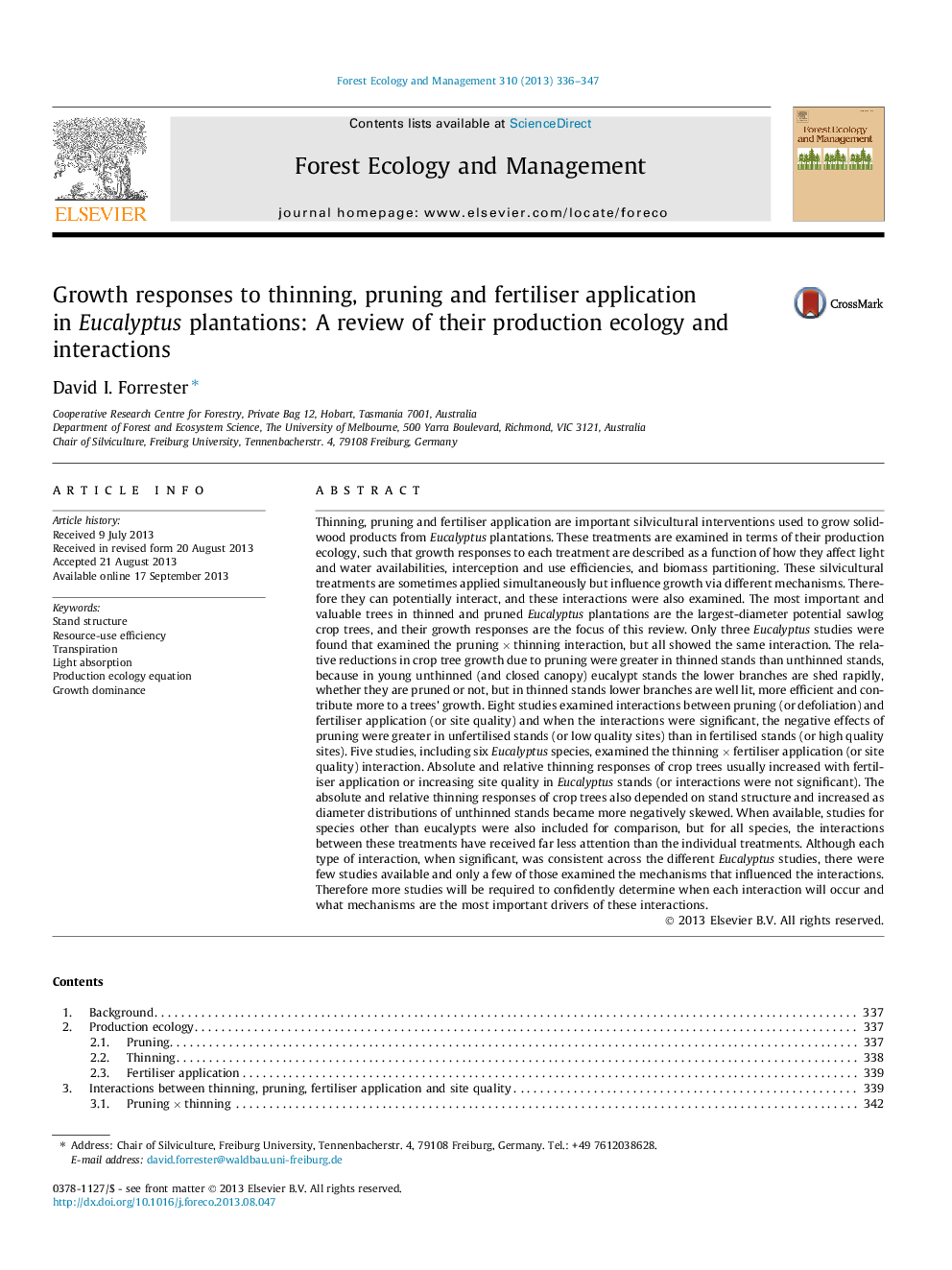| کد مقاله | کد نشریه | سال انتشار | مقاله انگلیسی | نسخه تمام متن |
|---|---|---|---|---|
| 6543711 | 159212 | 2013 | 12 صفحه PDF | دانلود رایگان |
عنوان انگلیسی مقاله ISI
Growth responses to thinning, pruning and fertiliser application in Eucalyptus plantations: A review of their production ecology and interactions
ترجمه فارسی عنوان
پاسخ های رشد به تدریج، هرس و کاربرد کود در مزارع اوکالیپتوس: بررسی محیط زیست تولید و تعاملات آنها
دانلود مقاله + سفارش ترجمه
دانلود مقاله ISI انگلیسی
رایگان برای ایرانیان
کلمات کلیدی
موضوعات مرتبط
علوم زیستی و بیوفناوری
علوم کشاورزی و بیولوژیک
بوم شناسی، تکامل، رفتار و سامانه شناسی
چکیده انگلیسی
Thinning, pruning and fertiliser application are important silvicultural interventions used to grow solid-wood products from Eucalyptus plantations. These treatments are examined in terms of their production ecology, such that growth responses to each treatment are described as a function of how they affect light and water availabilities, interception and use efficiencies, and biomass partitioning. These silvicultural treatments are sometimes applied simultaneously but influence growth via different mechanisms. Therefore they can potentially interact, and these interactions were also examined. The most important and valuable trees in thinned and pruned Eucalyptus plantations are the largest-diameter potential sawlog crop trees, and their growth responses are the focus of this review. Only three Eucalyptus studies were found that examined the pruning Ã thinning interaction, but all showed the same interaction. The relative reductions in crop tree growth due to pruning were greater in thinned stands than unthinned stands, because in young unthinned (and closed canopy) eucalypt stands the lower branches are shed rapidly, whether they are pruned or not, but in thinned stands lower branches are well lit, more efficient and contribute more to a trees' growth. Eight studies examined interactions between pruning (or defoliation) and fertiliser application (or site quality) and when the interactions were significant, the negative effects of pruning were greater in unfertilised stands (or low quality sites) than in fertilised stands (or high quality sites). Five studies, including six Eucalyptus species, examined the thinning Ã fertiliser application (or site quality) interaction. Absolute and relative thinning responses of crop trees usually increased with fertiliser application or increasing site quality in Eucalyptus stands (or interactions were not significant). The absolute and relative thinning responses of crop trees also depended on stand structure and increased as diameter distributions of unthinned stands became more negatively skewed. When available, studies for species other than eucalypts were also included for comparison, but for all species, the interactions between these treatments have received far less attention than the individual treatments. Although each type of interaction, when significant, was consistent across the different Eucalyptus studies, there were few studies available and only a few of those examined the mechanisms that influenced the interactions. Therefore more studies will be required to confidently determine when each interaction will occur and what mechanisms are the most important drivers of these interactions.
ناشر
Database: Elsevier - ScienceDirect (ساینس دایرکت)
Journal: Forest Ecology and Management - Volume 310, 15 December 2013, Pages 336-347
Journal: Forest Ecology and Management - Volume 310, 15 December 2013, Pages 336-347
نویسندگان
David I. Forrester,
